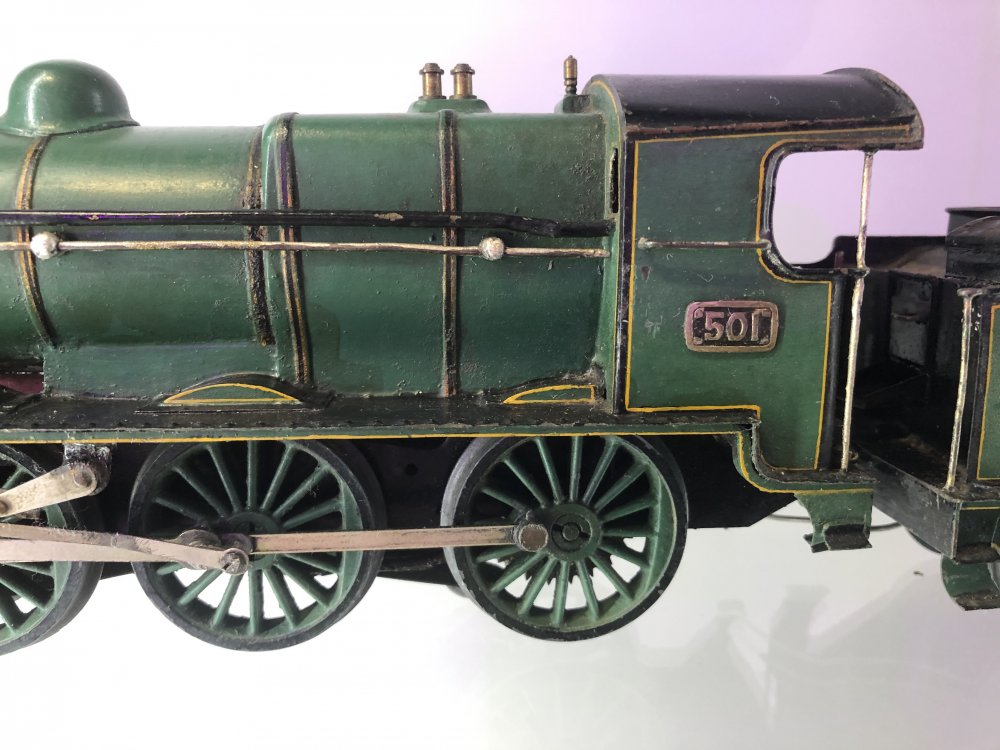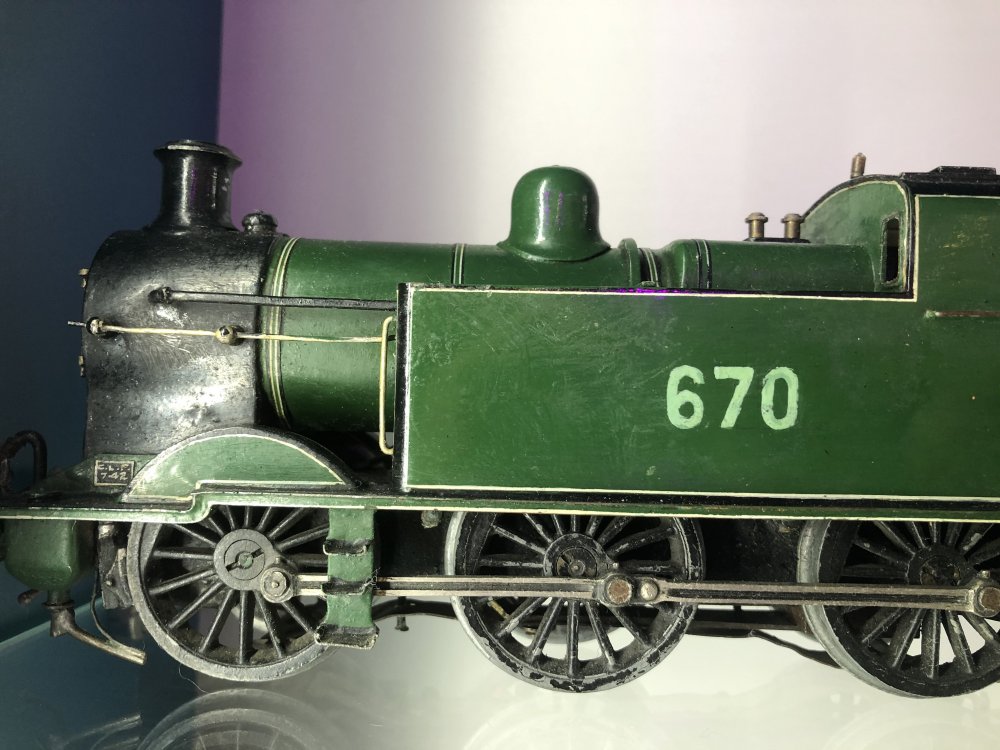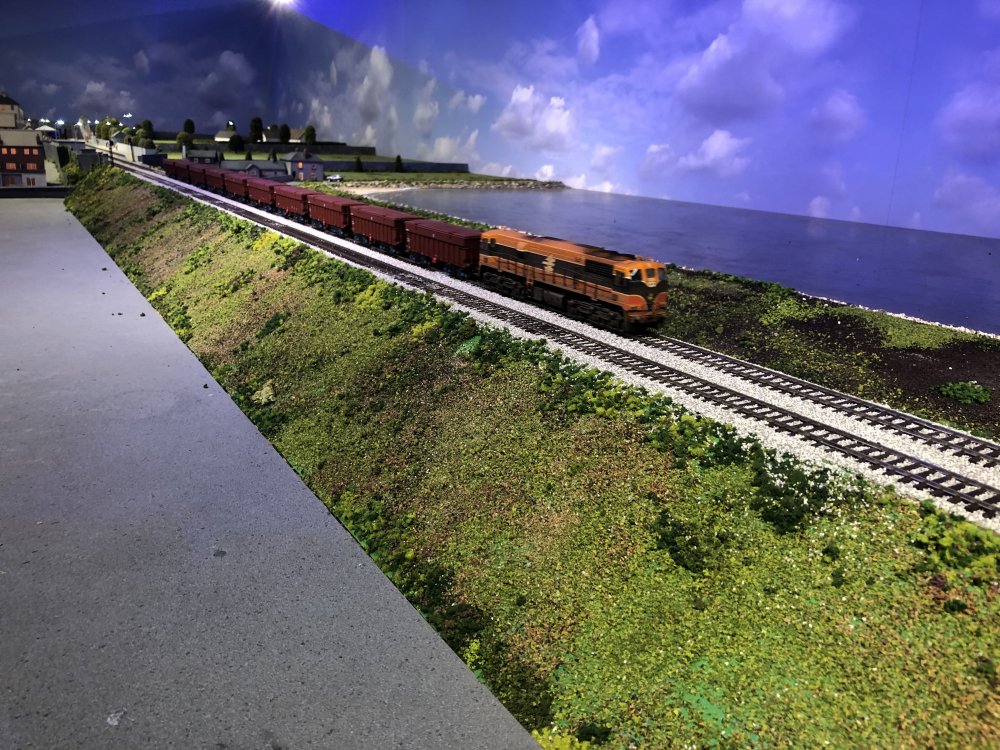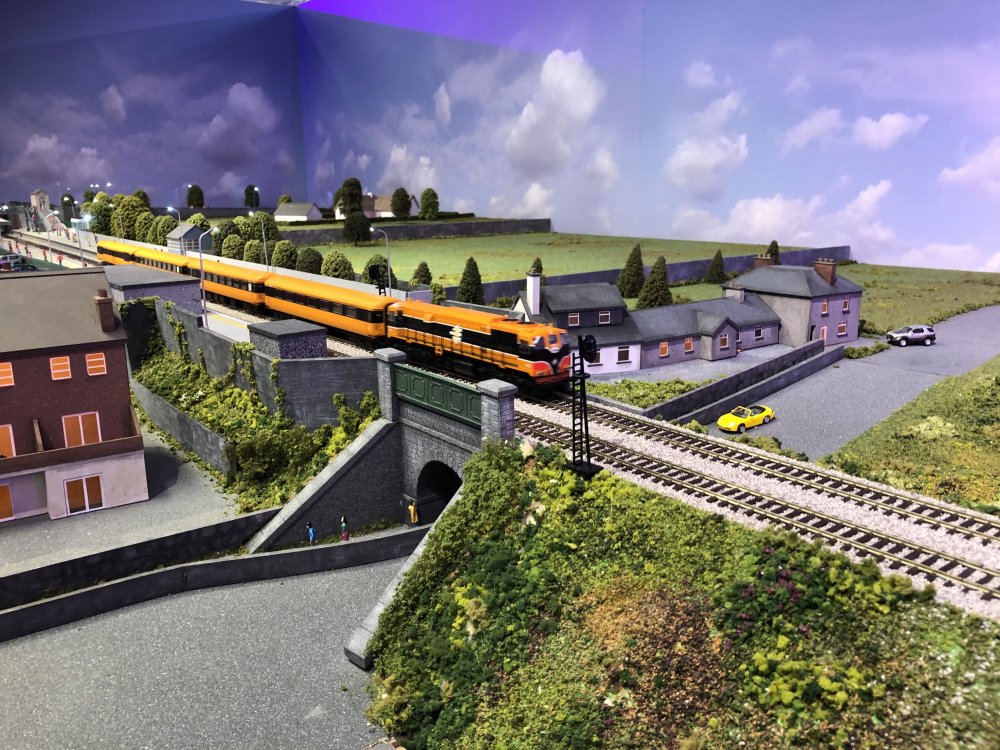-
Posts
15,866 -
Joined
-
Last visited
-
Days Won
393
Content Type
Profiles
Forums
Events
Gallery
Everything posted by jhb171achill
-
It might be added that many hunts were still carrying horses into the early 1960s. As late as perhaps 1962, large numbers of horseboxes were still on CIE's books. Lord and Lady Dunraven loaded them on trains on the North Kerry, while Ballsbridge siding, Fairyhouse, Curragh, Naas and various other places saw trains of them. Martin, I think you should pay Ernie compensation of £5000, and he should pay you compensation of £5000. That would sort it all out.
-
Tis true, Edo! Someone I know told me that a friend's acquaintance told him that IRM & Murphy Models will have RTR thyristor-controlled, DCC-ready, models available from noon on Tuesday. There is a small heating element inside them which emits a real turf smell. It will sell for €365 / £500, and will be available in every livery carried by anything ever in Ireland - plus LNWR yellow. Good weed, this.....
-
Looks like I missed out! Must go next time.....
-
John A very desperately belated answer; some two years and a bit! Further info has come to light since then, and I can now advise that from 1945 until the early 1950s, MUCH of the first wagon stock had light green snails and numbers - possibly all for a while. On the main lines, this was almost all in white by the late 50s, with all new wagons after at least 1954 having off-white-painted snails and numbers. But the C & L wagon stock almost never met with a paintbrush! Thus even at closure, the extremely heavily worn, faded, battered and weathered remnants of a wagon livery contained many with badly faded light green markings. Naturally, all carriage stock always had light green markings and lining, although one coach had a badly faded version of same.....
-
Leslie!!! You've gone over to the Dark Side!!!
-
As seen above, with the Strabane & Letterkenny Railway only opening in 1909 (one of the last; only exceeded by the Keady - Castleblaney line in 1913), it does not show on the 1907 map. Thus, prior to 1909, Strabane CDR station had no "back" platform.
-
As far as I can ascertain, Fry may have made at least one model for Donaldson - though I have yet been unable to identify which one, if any. It is also believed that at least of one of his OWN - possibly the tank engine 900 - was made for Donaldson. If this is correct, it may be that he made the body and painted it as Drew wanted, but then for some reason ended up retaining it, whereupon he put an electric motor in it. Drew was an extremely dogmatic person - but then so was Fry, by all accounts! In both cases, it was a brave man who contradicted them even when they were very demonstrably wrong! The colour discrepancy isn't, as such; the two greens were different. No. 501 is in GSR green - as used on 800-2 only - whereas 670 is in the post-1945 lined green used by CIE. The two were different. CIE put this green on main line passenger engines - the 500s, 400s, 800s, Woolwiches and a few others - and Dublin suburban tank engines. Everything else, of course, was unlined grey. But the GSR green was a "one night only" phenomenon, applied to the trio of 800s new, but not repated as they got CIE green at first repaint. Bit like the 121s and 071s being delivered in unique liveries, which disappeared once Inchicore got them in the same room as a paintbrush.
-
Yes, that beauty in Hell's Kitchen has the cream of the A & C classes, and the 121 cab has the grey seen inside the 121, 141, 181, G & E classes. The control desk was black instead of blue, of course. Never blue.
-
The GSR version was ONLY ever on the three 800 class, and disappeared on first repaint, which was into the CIE livery they carried for the rest of their lives. These are two of Fry’s models. He liked the GSR green, obviously, as he painted three of his locos in it (including 501 below), though none of them had it - yet his model of 800 was CIE green! GSR (“800 class”) lining was yellow and black and CIE lining was as on 800 in Cultra, black and white.
-
This was a one-off reprint for a special event, though it did briefly operate in traffic in it. Thus, it could be seen as an actual, if extremely short-lived "livery"; but they never carried it before. GSWR green of the 1870-1895 period was an extremely dark green, as seen on one of Fry's models or No. 90 at Downpatrick. They painted engines lined black from 1895 to about 1915-18, then grey onwards and to working steam's oblivion. A few familiar faces in that video, most now departed......
-
It was actually clockwork motors and rubber bands that NIR put in them...........
-
Today, the above three sets were in action, plus a 2-car 2700. They'll be rotated, as will locomotives from time to time. There are five sets of 0 gauge stuff made up for eventual use on the overhead track. These are from the "Castle" models - i.e. the stuff built in the 1990s for the old Malahide Castle layout. From memory (it's weeks since i put them in boxes), there is a J15 plus a couple of six-wheelers, a few wagons and a van, for a 1950s set. For the 1960s, a 141 and coaches in black'n'tan. For the 1970s an 071 and Mk 2 set. For the 1980s another 071 with a mix of bubbles, Guinness four wheelers and 4 wheel container flats. There's a "C" which can also do the 1950s or 1960s set also.
-
Saw the Tara going through today, and the Enterprise back in 1987.... But there was an issue with the Cork service today. Due to the less frequent service as a result of Covid-19, crews are less familiar with the route knowledge aspect of it. The crew of the 11:00 to Cork got lost today, and are shown here entering Malahide, where the driver had to stop to ask for directions. IMG_2658.MOV IMG_2658.MOV
-
I’d be interested to see a three-wheeler....! Fry’s model is a 1st class coach, indeed. It must be remembered, of course, that some six-wheelers - usually firsts, mail vans or full passenger brake vans, were often on main line trains mixed in with bogies ancient and modern, right up to the early 1960s....
-
A maroon “C” class! Now that’s a very nice “Might-have-been”!
-
I’ve no idea, Edo. There’s no evidence of anything continental as such in early railway station design here - though many early British railways also had low platforms. Probably just an “early railway” thing.
-
Postscript: now that I think of it, several Cobh line ones remained low into the 80s, with some on the Youghal line low until closure. Adore was low too, as were some others on the North Kerry, and the (only two!) on the Waterford & Tramore were too. A number of West Cork platforms were lower than normal but not quite as low as the GSWR.
-
I travelled very short distances in several guards vans. Steel ones, in all reality, were an absolute endurance test, even for a diehard railway enthusiast! What a LONG distance must have been like - say Limerick - Sligo on a bad winters day......gawd only knows!
-
Skanger in doorway "Got a few pence, Bud?" Full black bin liner sitting on pavement beside litter bin!!
-
It's not Ballyhaise..... could well be Maguiresbridge, though. The picture is taken from a conventional wooden-bodied coach, though, not a railcar set - which means that the net could possibly be wider. AEC / BUT's wouldn't have been on that route in that year, though - they rarely ventured beyond Clones until very late on.
-
Depends. The DSER, MGWR and GNR always had full height platforms, but the GSWR had low ones, like in mainland Europe. Quite a few were still like that into the mid 1970s, when many smaller ones closed (Knocklong, Goold’s Cross, Killonan, etc.). Mallow, however, still had low platforms until at least 1980 and possibly a few years after that. I think it was the last.
-
I agree, Robert, but I’d say it would be a brave man who would suggest it to the RPSI guys!
-
Indeed; a light grey livery on a working locomotive was just as nonsensically impractical as the silver livery on earlier loco classes. It actually gets to the stage where a pristine one on a layout barely looks realistic! Now - for the very serious bravery awards - WHO will be the first to weather a 121 (OR a silver A!) to a state of apparently shocking, filthy cosmetic neglect!
-
I will prostrate myself accordingly and say six Hail IRMs.....
-
I would say that in this day and age, something familiar to younger enthusiasts would be better, though it wouldn't be my thing. The obvious would be an ICR set, or an 071 & half a dozen Taras or ballast wagons; or three or four container flats with containers and a 201.
.png.c363cdf5c3fb7955cd92a55eb6dbbae0.png)








